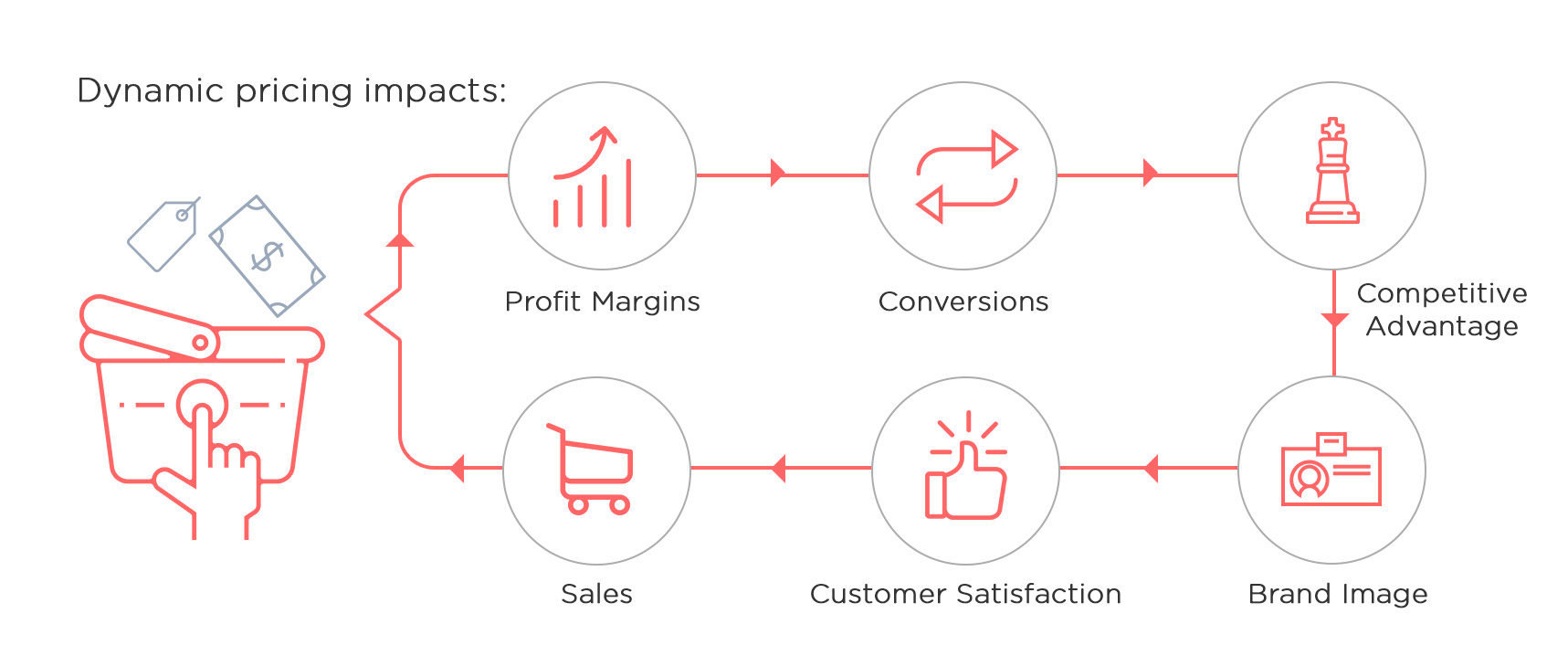Price may be the single most important determinant behind a consumer’s decision to buy. From growing profits to strengthening brand image to scaling operations, the pricing strategy you adopt will dictate how your entire business will be built. You want that foundation, of course, to be as sturdy as possible.
This means you can’t just throw caution to the wind and offer the lowest prices to undercut your competitors. Nor can you set your prices in stone and stick to your guns no matter how the market evolves. Such shortsighted paths are surefire dead ends.
What you can do, though, is plug into the available data and translate the insights you gain into the smartest prices. That’s what you want: A win-win middle ground that favors both buyer and seller. It all comes down to this balancing act between product margins and customer satisfaction.
But how do you find that middle ground? How can you hit your lofty profit targets while trying to maintain a consumer-friendly price image? The answer lies in dynamic pricing software.
Use data to adapt in favor of your business’s core values
Dynamic pricing starts with gathering information. Today’s market may be considerably more intricate than ever before, but the other side of the coin is that you have the most advanced means of understanding it.
That’s where data comes into play – by painting a holistic picture of your manufacturers, competition, and customers. With the right algorithms, you can inspect the behavior of each of these market agents across time and, more importantly, in real-time to adapt your prices based on the lay of the land.
One approach to price fluidity is rooted in time. Consider how holiday discounts or limited-time promotions help businesses adjust based on the month, week, or day. They can even shift by the hour; you’ve certainly come across a restaurant with a cheap lunch special, right? Even more versatile is the model used by ticket vendors and flight websites in which ticket prices spike the closer you get to the date of your event or departure. Websites like Seatgeek and Kayak have made a fortune capitalizing on last-minute sales and vacation seasons.
But time is only one piece of the puzzle. You may also fluctuate your prices to account for spurts of growth or regression for certain products among your competitors. Or, like many Saas companies, you can vary payments according to customers’ usage (i.e. Dropbox charging higher costs for more storage). You can even promote different features or levels of service based on your segments’ interest levels.
From the bird’s eye view, there are clearly a lot of decision points to monitor. And that’s where you have to do some legwork. First, identify your value points: Which metrics and people matter most? Second, work with your chosen dynamic pricing software to continuously test, analyze, and refine your strategies.
Dynamic pricing software enables business efficiency
Beyond simply getting the most value out of your products, intelligent pricing solutions can unlock a treasure chest of benefits.

From a pure marketing standpoint, it simultaneously allows for precise targeting and wider outreach. If you’re not locked into prices, you can directly appeal to a number of audiences that you’d normally be pricing out. And, with such personalized campaigns, your brand’s selling points will easily outpace that of competitors still trying to entice a general customer base.
The advantages further extend to the logistical facets of your organization. With a dynamic pricing framework, you’re capable of responding to surges in demand with more adequate supply. Thus, you can avoid the missed opportunity of out-of-stocks and the waste of surplus stocks – two frequent areas of concern for major retailers.
Finally, tools like IntelligenceNode’s Dynamic Pricing can handle the menial, operational labor inherent to data collection. Meaning that you and your team can start the day with fresh insights in hand and thus focus more of your time on higher-level, growth-minded strategizing.
Final word: Transparency is the key to winning users’ trust
In some industries, some fluidity of cost is expected. Nobody calls foul when airlines change their price tags leading up to a flight.
But that’s not quite the case in retail, where the utilization of dynamic pricing software isn’t yet ubiquitous. Here, the optics matter considerably more because price changes can be seen as shady or exploitative.
So remember: Be transparent with your pricing model. After all, you’re trying to cultivate long-term relationships with your prospects, not trying to trick them into making a purchase.









